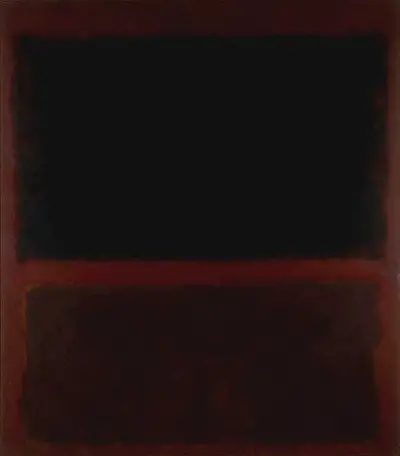The last decade of Rothko's life would make use of a darker colour scheme, in the main. Despite the odd exception, such as Untitled (Blue Divided by Blue), most works would be deep in darkness as his mood seemed to take something of a dive. As someone who worked in an expressive manner, it would be impossible for the artist to hide any of his own personal problems from his work, and we can find a similar scenario in many other contemporary artists who sought to work directly from their own minds. Whilst it is unfortunate that Rothko would go through this period, it did still leave behind another interesting chapter in his oeuvre, and Black on Dark Sienna on Purple is a perfectly good example of that. He would work many alternative arrangements of this palette in the same year of 1960.
The artist leaves very subtle variations between the colours in this painting, with the black and dark sienna sections being closely aligned, with the background that shows through from beneath being somewhat lighter. Rothko would normally leave a breathing space between each block of colour as well as the surrounding border of the canvas, though in some cases he did push things directly to the edge. He also normally would soften the edges of the colour blocks, which reduced the harshness in contrast as well as providing a more relaxed atmosphere within these strange arrangements of colour.
This artwork was completed in 1960, but its current whereabouts is unknown. Most likely is that it remains in a private collection, perhaps within the US. Rothko produced a number of very similar paintings during the same year, one of which can now be found at The Museum of Contemporary Art in Los Angeles, USA. They all have this incredibly dark contrast that started to appear towards the end of the artist's career. Visitors to see the alternative version in Los Angeles will also be able to view original paintings by the likes of Barnett Newman, Jackson Pollock and Jean-Michel Basquiat. It has an impressive wealth of art to enjoy, all devoted to around the 20th century and all the different and exciting movements which appeared during this pivotal era. You will find many more exciting venues around the US, and this nation's involvement within contemporary art has also meant that many of these galleries and museums are biased towards that particular period.

